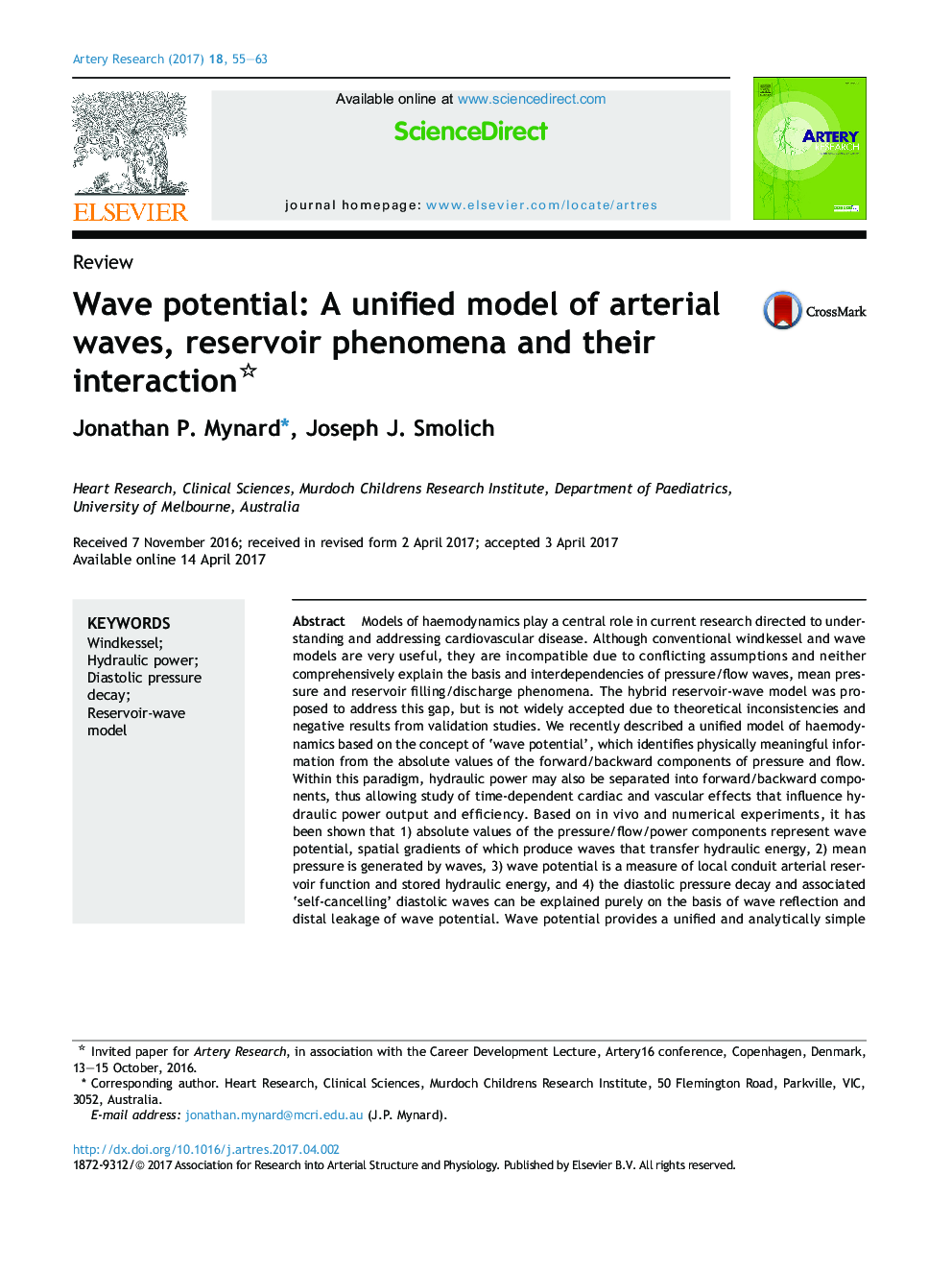| Article ID | Journal | Published Year | Pages | File Type |
|---|---|---|---|---|
| 5599204 | Artery Research | 2017 | 9 Pages |
Abstract
Models of haemodynamics play a central role in current research directed to understanding and addressing cardiovascular disease. Although conventional windkessel and wave models are very useful, they are incompatible due to conflicting assumptions and neither comprehensively explain the basis and interdependencies of pressure/flow waves, mean pressure and reservoir filling/discharge phenomena. The hybrid reservoir-wave model was proposed to address this gap, but is not widely accepted due to theoretical inconsistencies and negative results from validation studies. We recently described a unified model of haemodynamics based on the concept of 'wave potential', which identifies physically meaningful information from the absolute values of the forward/backward components of pressure and flow. Within this paradigm, hydraulic power may also be separated into forward/backward components, thus allowing study of time-dependent cardiac and vascular effects that influence hydraulic power output and efficiency. Based on in vivo and numerical experiments, it has been shown that 1) absolute values of the pressure/flow/power components represent wave potential, spatial gradients of which produce waves that transfer hydraulic energy, 2) mean pressure is generated by waves, 3) wave potential is a measure of local conduit arterial reservoir function and stored hydraulic energy, and 4) the diastolic pressure decay and associated 'self-cancelling' diastolic waves can be explained purely on the basis of wave reflection and distal leakage of wave potential. Wave potential provides a unified and analytically simple paradigm of arterial haemodynamics that extends and is fully compatible with conventional wave separation, while overcoming the difficulties encountered with the reservoir-wave paradigm.
Keywords
Related Topics
Health Sciences
Medicine and Dentistry
Cardiology and Cardiovascular Medicine
Authors
Jonathan P. Mynard, Joseph J. Smolich,
